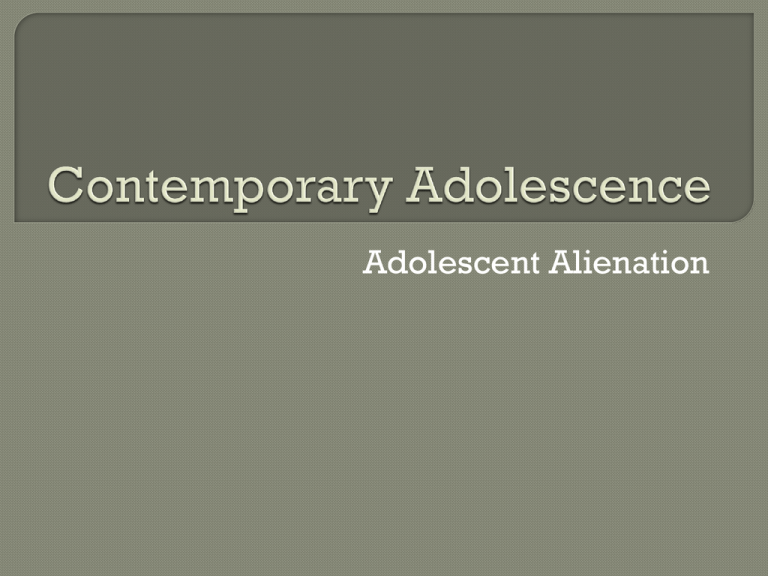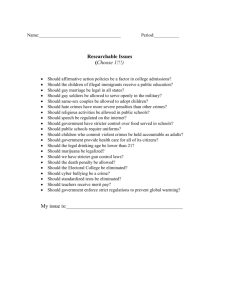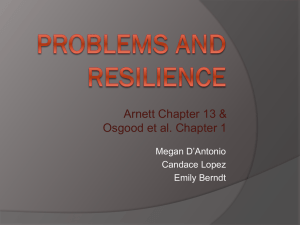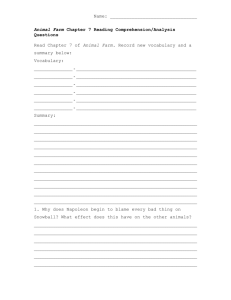Chapter 14
advertisement

Adolescent Alienation Internalizing problems • Over-controlled: families that exercise tight psychological control • Often experience distress Externalizing problems • Under-controlled: families where parental monitoring and control is lacking • Often do not experience distress Major depressive disorder: • Depressed or irritable mood for most of the day, • • • • • • • • nearly every day Reduced interest or pleasure in all or almost all activities Significant weight loss or gain; decrease in appetite Insomnia or oversleeping Psychomotor agitation or retardation Low energy or fatigue Feelings of worthlessness or inappropriate guilt Diminished ability to think or concentrate Recurrent thoughts of death or suicide Adolescents have higher rates of depressed mood than adults or children Episodes of depressed mood before adolescence are relatively rare Rates of depressed mood rise steeply from age 10 to about 15-17, then decline Treatments: • Medication • Psychotherapy Different models of therapy Self-acceptance Self-esteem 1. 2. Yes No 50% 1 50% 2 Suicide attempts are usually preceded by symptoms of depression • But usually happen when symptoms are going away Risk factors: • Family problems • Relationship problems • External factors: school Three groups: • Experiencing years of problems with family, peers and teachers • Struggle with mental illness such as depression or bipolar • Previously functioning well, but experience an acute crisis Inexperience is one contributing factor to accidents Risk taking is also a major factor Solutions: • Parental involvement and monitoring • Drivers ed vs. Graduated driver licensing Three kinds of criminal acts: • Status offenses: violations of the law because they are committed by juveniles • Index crimes: serious crimes Property crimes: robbery, theft, arson Violent crimes: rape, assault, murder • Nonindex crimes: less serious offenses like illegal gambling and disorderly conduct Two types of delinquency • Life-course persistent delinquents: show a pattern of problems from birth onward • Adolescence-limited delinquents: no problems in infancy, childhood, or adulthood Interventions: • Individual therapy • Group therapy • Vocational training • “Outward Bound” programs • Scared Straight Problems with interventions: • Delinquents rarely welcome the opportunity to participate in them • Programs take place in adolescence, after a pattern has already developed Programs that do work: • Multisystemic approach Two types of runaways • Intent runaways: those that intend to leave for a long time • Transient runaways: those that intend to be gone for a limited amount of time Why adolescents join gangs • Low self-esteem • Poor relationships with parents • Unresolved ethnic identities





